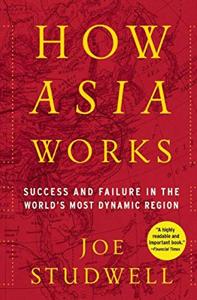
Want to learn the ideas in How Asia Works better than ever? Read the world’s #1 book summary of How Asia Works by Joe Studwell here.
Read a brief 1-Page Summary or watch video summaries curated by our expert team. Note: this book guide is not affiliated with or endorsed by the publisher or author, and we always encourage you to purchase and read the full book.
Video Summaries of How Asia Works
We’ve scoured the Internet for the very best videos on How Asia Works, from high-quality videos summaries to interviews or commentary by Joe Studwell.
1-Page Summary of How Asia Works
Overview
Dealing with China reveals the journey of how China became an economic superpower. This passage explains some of its advantages and disadvantages, as well as insights on how it should work with the US to face global challenges. It also mentions that Japan, South Korea and Taiwan had impressive developmental success stories in their own right. Other Asian countries tried to follow in their footsteps but were unable to sustain it for long periods of time because they didn’t have what made these economies develop differently.
To achieve economic success, states need to follow a certain sequence of steps. They also need to start with the right ones and not try to do everything at once. Let’s explore these steps in detail and see how we can transform our state into an economic powerhouse.
Big Idea #1: To start development in poor countries, we need to increase agricultural output. We can do this by promoting household farming.
For a long time, Asia lagged behind the West in terms of technology. But then Japan, South Korea, Taiwan and China started to catch up and have now become economic powerhouses. How did they do it?
Successful Asian countries promoted small-scale household farming instead of moving prematurely to large-scale farming. Small farms are more efficient and create jobs, while large farms generate few jobs and low agricultural output.
This may seem counterintuitive at first, but it makes sense once you look into the details. Unlike in manufacturing, increasing scale doesn’t improve output or quality. Only fertilizer and intensive labor can increase yields and quality.
Large-scale farming is not always a good idea because it can be harmful to the environment. The mechanization of agriculture reduces the amount of jobs available and lowers the amount that each plant can produce, which is bad for poor countries.
In fact, human labor is the key to getting the best yields possible. For example, shade-tolerant vegetables like celery can be cultivated in the shade of taller plants, which makes it possible to grow more within the same area—but this requires planting and harvesting by hand. This creates agricultural outputs that dwarf those of machines and large-scale farming. Promoting household farming also has other positive effects: it creates jobs in developing countries since there are limited job opportunities outside agriculture for workers who lack a formal education or skillset. Since most poor countries have few job opportunities outside of agriculture due to their lack of industry and service sectors, having an agricultural sector composed mostly of household farms offers lots of jobs until better alternatives come along.
Big Idea #2: A well-executed land reform is key to promoting household farming.
So how do you promote household farming? First, you need to solve the problem of land ownership. Who owns it and who needs it?
The solution is land reform. The redistribution of land among the people will solve this problem.
Let’s look at some countries that had successful land reform. For example, in Japan after World War II, the US wanted to help them out with their economy and keep them from adopting communism. They created a law called land reform to redistribute farmland to families who worked it. Wolf Ladejinsky was an agricultural adviser for the Americans and he helped draft this legislation because he knew that if people owned their own property they would be more productive workers and less likely to follow communist ideas.
In the early 50’s, there was a policy in Japan that limited land ownership. This meant that wealthy landowners had to give up their excess land and share it with poorer farmers. As a result of this policy, rural output increased above pre-war levels as well as economic inequality being reduced.






